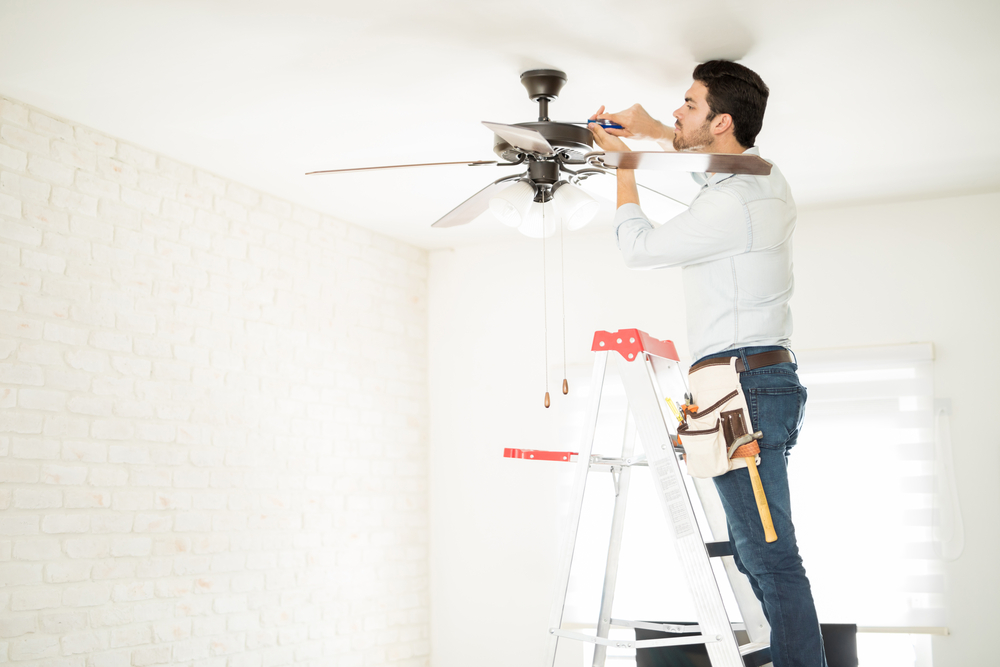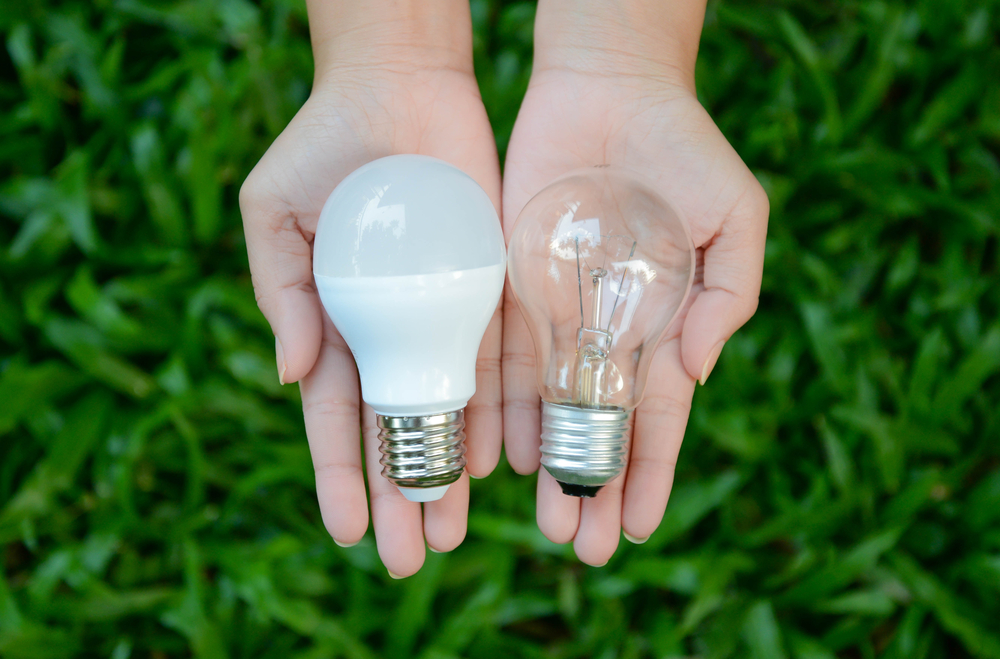10 Simple Ways to Lower Your Utility Bills
During months and seasons of extreme temperatures, your monthly utility bills may start soaring. The constant heating and cooling of your home uses a lot of energy and costs money. For extra hot months, the family may be showering more too.
Add in loads of laundry, dirty dishes and all those lamps and gadgets plugged into outlets, and your meter could be working overtime as you zap through extra electricity. Or gas…depending on your energy options.
No one likes to have extra high bills, and paying out double to the utility companies could cause families to cut the budget elsewhere. When the budget is being electrocuted by energy costs, recharge your finances and follow these 10 simple ways to lower your utility bills.

1. Turn on ceiling fans
Ceiling fans help circulate the air in your home. The constant swirl of the blades allows for rising warm air to mix a bit lower, while cooler air can be pushed closer to the ceiling. Fans help the home stay cooler in the summer and warmer during the winter.
This extra circulation could mean that you can nudge the thermostat a bit, using less energy and saving the family a bit of money each month.
Don’t have a ceiling fan? These are easy to install and they come in a variety of prices to work with most budgets.
2. Adjust the hot water heater
The temperature setting on your hot water heater could help or hinder your finances. Yes, everyone loves a hot shower—especially during cold winters. However, setting the temp too high could be burning your budget.
According to the Department of Energy, “hot water heaters account for nearly 17 percent of a home’s energy use.” What’s the ideal temperature for your hot water heater? To keep burns away (and to help lower bills), the Department of Energy recommends nudging that temperature to 120 degrees (Fahrenheit).

3. Switch to LED light bulbs
Incandescent light bulbs are the eight-track of lighting options. Stop lighting your home with these vintage bulbs, because they use up too much energy.
Instead, switch all your lamps and fixtures to LED. Yes, LEDs are a bit pricier, but they last much longer, use less energy, produce less heat and will save you money!
According to USA Today, unless you have a supply of incandescent bulbs, you won’t be able to find them at stores, as incandescents were phased out in 2014. Although, Amazon still has sellers that offer the old-school bulbs.
4. Turn off the tap!
One of the simplest changes that homeowners can make to cut energy costs is to use less water. This means turning off the tap when washing hands and brushing your teeth and taking shorter showers.
Homeowners might not be mindful as to how much hot water they use doing other tasks, too, like washing clothes and dishes. Don’t wash dishes or clothes unless the load is completely full. Smaller loads just waste water.
5. Look for rebates
Some utility companies offer rebates for homeowners who select energy–saving appliances or and may reward other energy conserving choices. Check out your utility company’s web site to see what rebates/programs are available in your area.
Homeowners also can download the Benefyd app, which helps track down rebates in the area.
6. Conduct a home energy audit
Knowing how much water, electricity and gas you use is the first step in reducing your usage. Benefyd can help owners find out what rooms in the home are using the most energy.
Using the Benefyd app to conduct a home energy audit gives you the big picture of your energy use and may help you uncover underlying problems that are causing excessive energy costs (like a leaky pipe).

7. Utilize the Internet of Things (IoT)
The Internet of Things is just what the name implies—using tech in our daily lives to control appliances and other home necessities.
Using smart plugs take the appliance digital, and you can control the energy use from your phone or other device.
IoT helps could help homeowners break those bad habits that could be costing money. If you forgot to turn off the lights when you left the house, no worries! Just use your phone to turn off the smart plug.
8. Embrace minimalism.
Using less costs less! Embrace a habit of minimalism for your home. Unplug any device or appliance you don’t use. Open up the curtains to light the home naturally. Recycle old batteries, glass bottles and appliances—you may even earn a little cash!
When you are in the habit of using less, you may start to see the impact on your bills. Plus, decluttering the house may leave you feeling a little bit less anxious.
9. Insulate windows
Warm air could be escaping from your windows. If a room is feeling too cold, perhaps heat is leaking out of poorly insulated windows. Home improvement stores sell plastic insulation film to cover windows and keep warm air in the home.
10. Program the HVAC controls.
Many HVAC units can be programmed to increase or decrease the temperature during off hours. If you’re at work during the day, adjust the controls so that the unit uses less energy when you’re not at home (lower temps during winter, warmer temps during the summer).
You may decide to adjust the temperature at night, too. These small changes can make a nice dent in that monthly bill.
Don’t feel zapped by your monthly utility bills. Take control of your energy use and embrace changes to lower your costs each month. Adjust your HVAC during off-hours while at work or school. Turn down the temperature on your hot water heater. Keep heat from escaping your home by insulating windows during the winter months. Homeowners also can take advantage of the Benefyd app to conduct a home energy audit and help find valuable rebates. Or contact the local utility company for more information on cost-saving options.
Change bad habits and make a conscious effort to use less energy and waste less natural resources. Not only will you help to decrease your carbon footprint, but you will save money, too!


